I recently received the following question from a reader: “How about a blog post on what led you to your current EDC handgun? A 9mm 1911 isn’t the most common choice, and I know you had been working with revolvers for a while there.” He’s absolutely right; a 9mm 1911 is a pretty unconventional choice for several reasons. Let’s take a look at them, and the gun itself.
This article contains affiliate links.
NOTE: if you have questions, ask me! I am more than happy to attempt to answer most of your questions here.
Why the 9mm 1911?
Right off the bat: I’m not trying to convince anyone to my way of thinking or sell anyone on the 1911. In many ways the 1911 is a problematic platform for self-defense use. At the risk of imply that I’m “special” in some way, I do think the 1911 fits me and my blend of training and experience in a way that it probably fits few people. I don’t carry one because it’s cool or I like the way it looks. Nor am I a contrarian or gun hipster. I legitimately believe the 1911 is the best option for me.
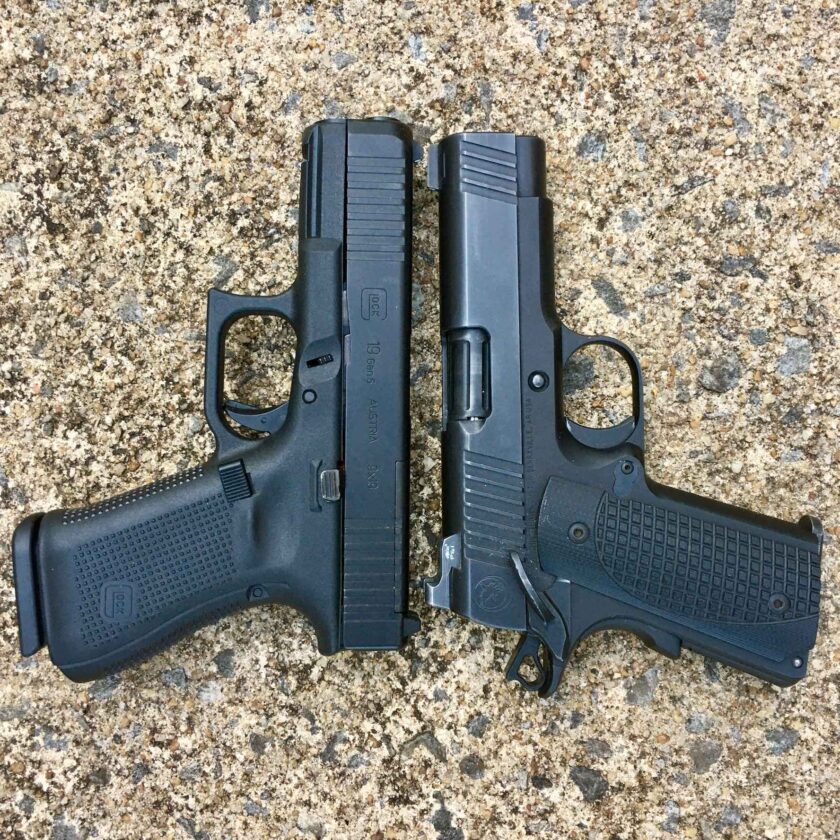
While I try to make most of my articles broadly applicable or demonstrative of a larger theme, this one is just about me and why I chose a particular tool. Maybe some of you will still get something out of it. This is the kind of post that I could write about for several thousand words, but I’ll try to keep myself in check. Additionally, this may lead to follow-up or two.
There were several factors that went into the selection of this particular firearm. My criteria were:
- 1911 pattern,
- chambered in 9×19,
- reasonably compact, and
- reliable
At this point I know someone is standing on their chair because I didn’t list reliability first (or just list it three times). That’s OK – that list is not provided in order of precedence, but rather the order in which I’m going to explain things. Bear with me, and all will become clear.
1911 Pattern
There were two reasons I wanted to go with a 1911-patterned pistol. The first and vastly overriding reason is simply that I have a tremendous amount of experience on the 1911 platform – more than all other pistols and action types combined. It’s what I grew upon. I have received an amount of training that would be difficult to duplicate in half a dozen lifetimes if I had to pay for it out of my own pocket. That training was tremendous in volume, and also qualitatively exceptional. It was done under excellent instructors, in an extremely competitive environment where everything was graded, and failure might mean you don’t deploy with your platoon. That pressure-cooker atmosphere had a way of ingraining things into me.
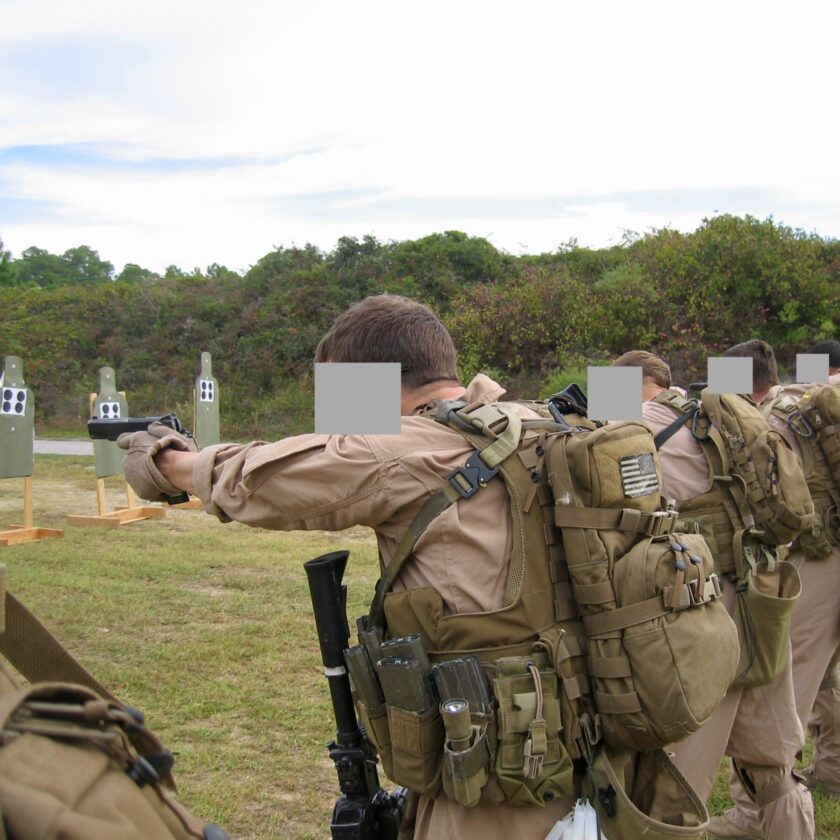
The second reason I chose the 1911 pattern is that I wanted something that accommodated my hands well. I hesitate to call my hands small, but I have a hard time keeping a Glock 19 in the same place during sustained strings of fire. It’s not impossible, mind you, but it takes a lot of very focused effort and reduces my ability to focus on other things (this could probably be largely remedied with a grip reduction). The single-stack 1911 is a near ideal size for me. Though the big “Colt .45” is often perceived as a hand-cannon, it’s actually quite slender. This impacts kinesthetic accuracy as well as my ability to hold onto the gun during recoil.
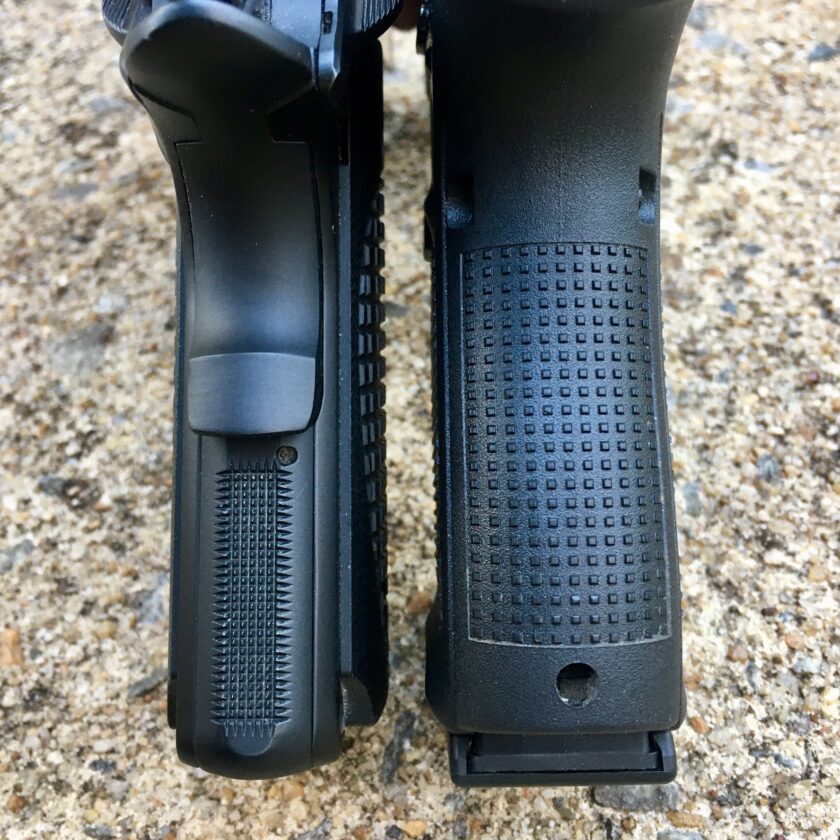
Now, if you’re a military member, cop, etc, you have to “dance with the one that brung ya” (as my dad would say). In other words, you have to get as good as you can with what you’re issued or authorized to carry. I’ve certainly done that; I’ve passed some very demanding qualification courses with Glocks, and carried them, Berettas, and 1911s all into harm’s way. And I’ll do it again if I have to. But in my current capacity I can carry anything I want, so I decided on the gun that gives me the best from-the-holster results with the least conscious effort. That also happens to be the gun that I have the most training on and the one that gives me the greatest potential for the accurate, first-round hit. That’s it. That’s the “why the 1911?” piece of the puzzle.
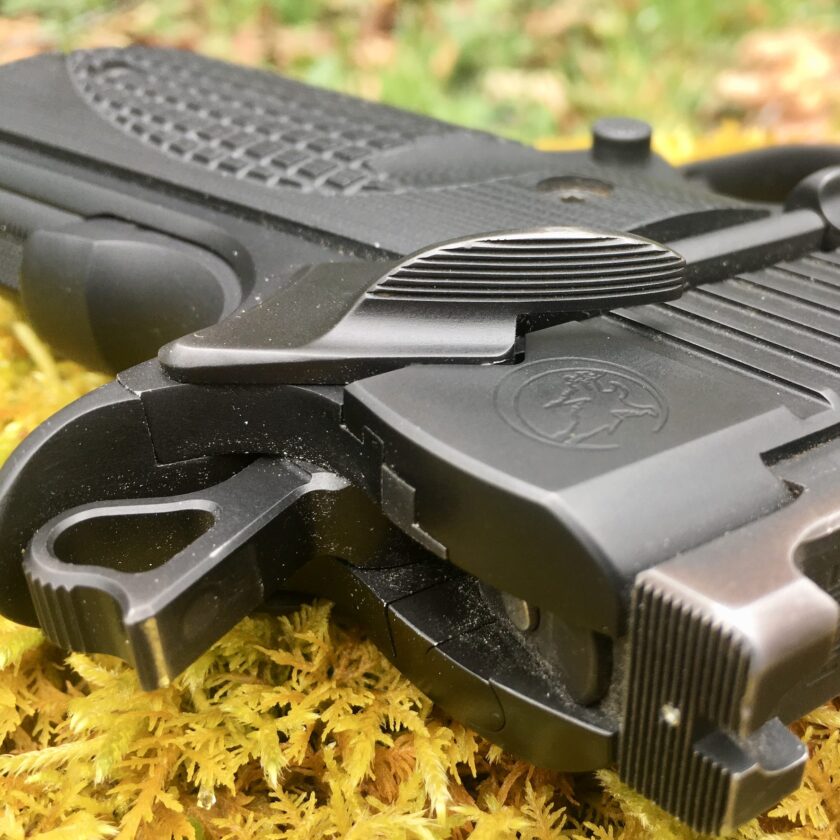
Now, there’s also one other reason for my 1911 requirement that will probably get me some hate mail: safety. I went from carrying a double-action revolver in the appendix position to carrying a striker-fired handgun in the appendix position. I’m not going to lie, holstering and feeling the resistance of the holster creeped me out a little. I get it – your finger is your safety, nor does a manual, external safety relieve me of the responsibility for ensuring my own safety. That’s cool, man – I completely get it.
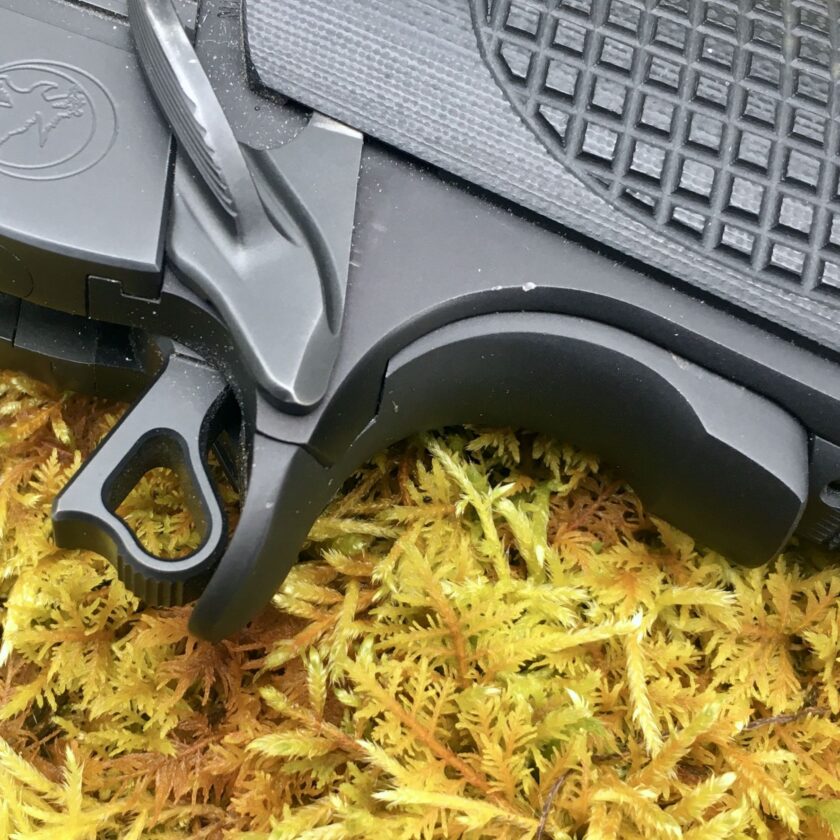
But, I wanted a 1911 for one of the same reasons that the double-action auto is seeing some resurgence: I wanted that extra margin of safety. Or, in the case of the 1911, two safeties. It’s completely personal, I’m not telling you you’re unsafe, or I’m smarter than you, or anything that should provoke an angry response. Seriously – it’s me, not you.
Chambered in 9×19
So that’s “why the 1911”, but why a 9mm 1911? Why not just go with the tried-and-true .45? Wanting a 9mm introduces all kinds of complications into a choosing a 1911. OK, that’s a lie – it introduces one complication but it’s a doozy: reliability. I will discuss reliability in a moment.
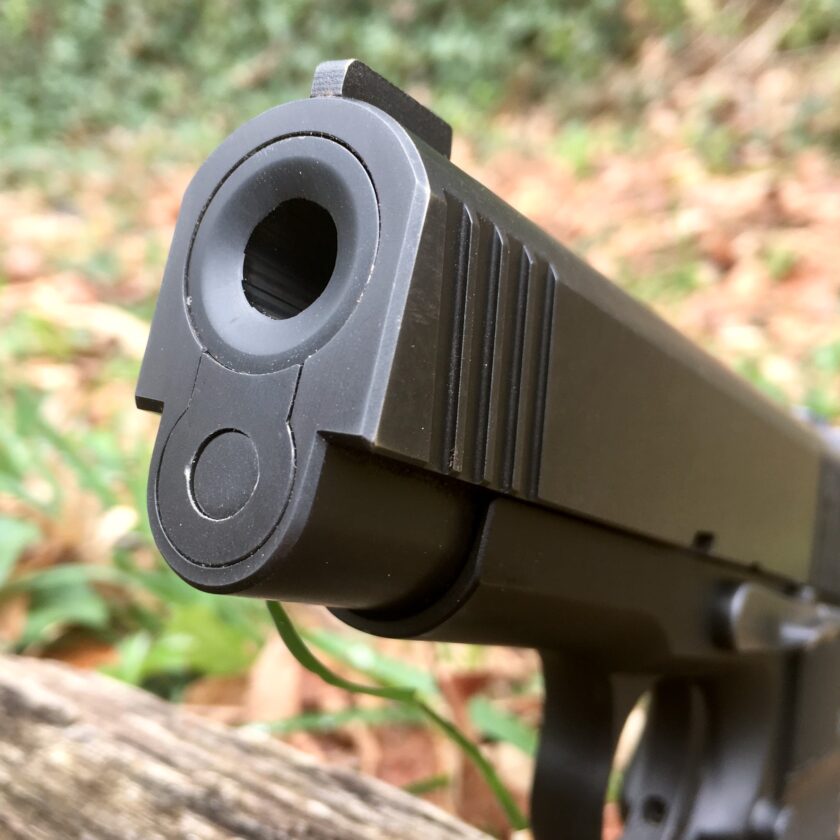
Still, there are some good reasons to recommend 9mm. First, a 9mm gives me a tad better capacity regardless of what size gun I’m carrying. If you’ve peaked at the next section, you know that a reasonably compact size is one of my criteria, so we’re already close to the bottom of the barrel when it comes to capacity. An extra one or two rounds is a big deal when we’re working in the single-digits.
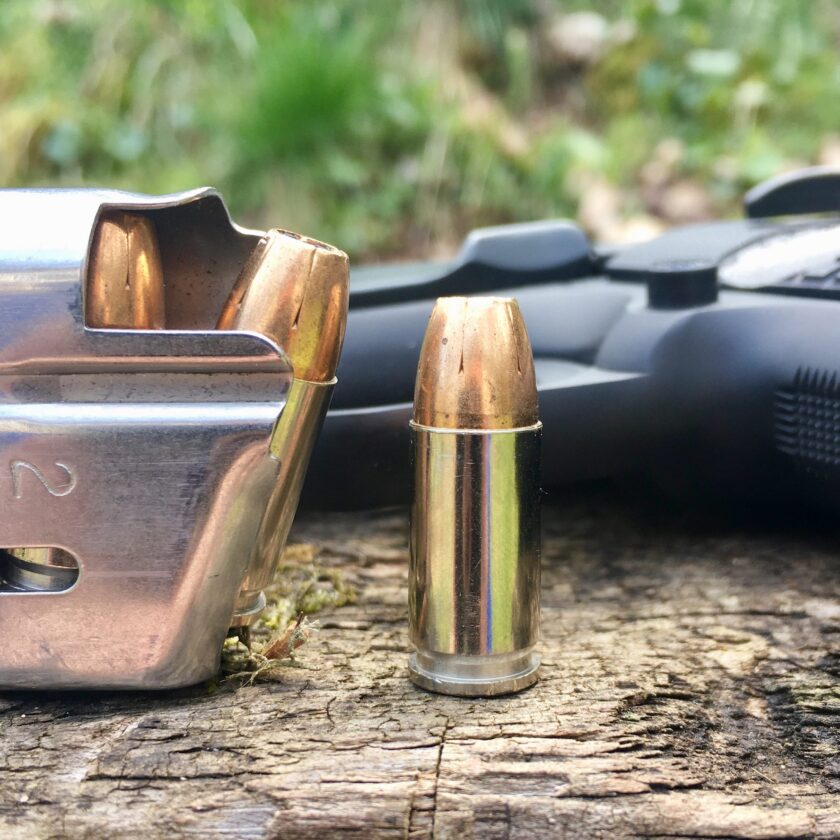
Secondly 9mm ammunition is – or was, once up on a time before coronavirus – less expensive than .45 ACP. Actually, this is probably the main reason – the price difference was enough that I could shoot 30-40% more for the same money. That’s significant. In the first year of ownership I put almost 6,000 rounds through this gun. My cost would have been significantly higher in a .45 ACP.
So far the question, “why the 9mm 1911?” has been answered: I wanted to have my cake and eat it, too. These don’t really make sense by themselves, so let’s go through the rest of my list of criteria.
Reasonably Compact
As with anyone considering any carry gun, I desired an appropriate size. Up until I owned this 1911, most of the guns that I had consistently carried for any appreciable period of time in my personal life had been significantly smaller. They were a Sig P238 HD, a J-Frame revolver, and an M&P Shield 9. I had carried other guns, including a full-size 1911 and a Glock 19. . . but not for very long, and always gravitated back to guns skewing toward more comfortable/less capable. When I ordered this 1911 I had decided it was time to step up a bit from the Shield to roughly Glock 19 size. So why didn’t I just go with a Glock 19?
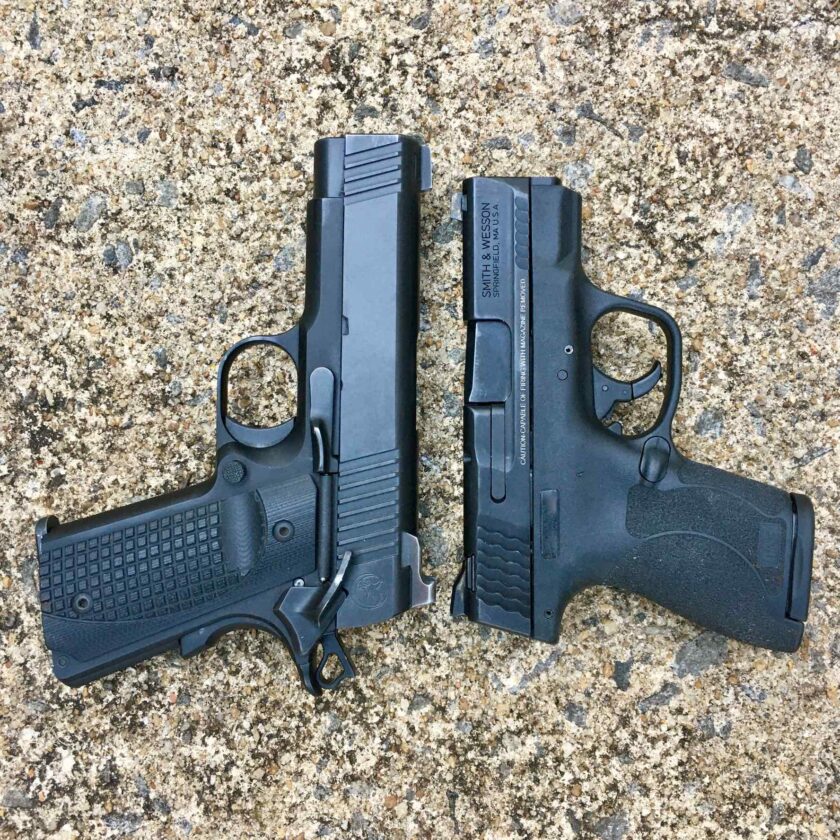
The primary answer to that was covered in the first section, “1911 Pattern.” Other than the smaller grip frame, the 1911 does provide an additional benefit over the G19, at least for a skinny dude like me: the slide thickness. The 1911 is a thinner gun all the way around. This means only only the gun is skinnier, but also the holster that holds it. This makes a lot of difference in my 32-inch waist.
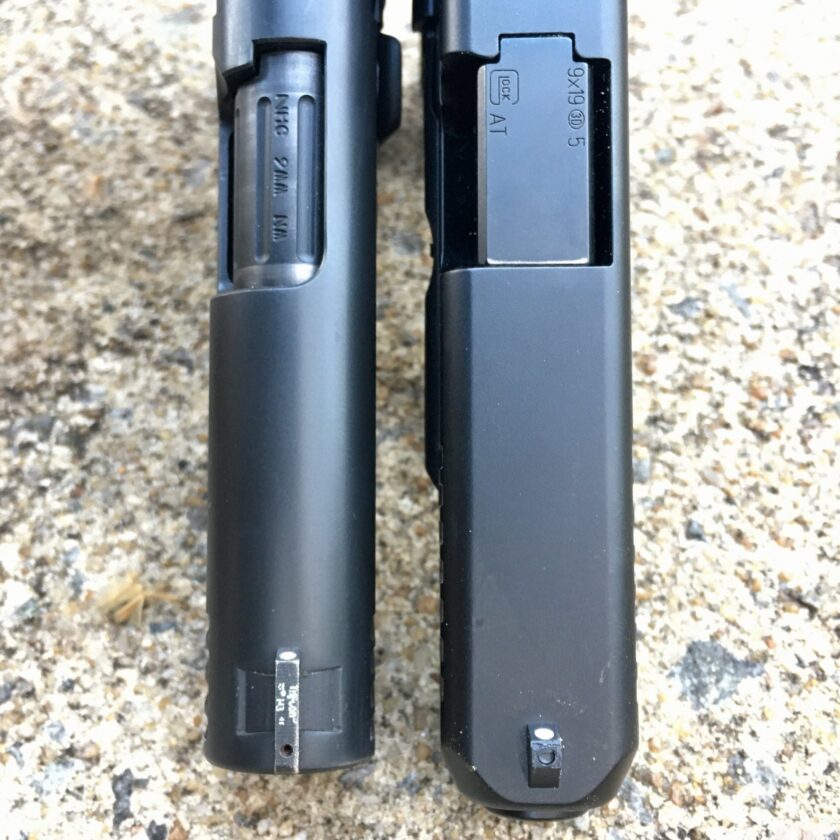
Reliable
And here’s where we get to the bugaboo. Despite reliability being relegated to the last item on my list, it is – by far – the most important. By a lot. And that creates a problem when you add in the other items listed above. The 1911 can be an insanely reliable platform. However, when you mess with the size and caliber, it can get real finicky, real quick. Stepping down to 9mm creates a big potential feeding problem: the 9mm cartridge is shorter than the .45 ACP around which the gun was designed. There’s also the issue of reduced dimensions. For whatever reason it’s harder to find a 1911 that’s lost some slide length and hasn’t lost its reliability along with it.
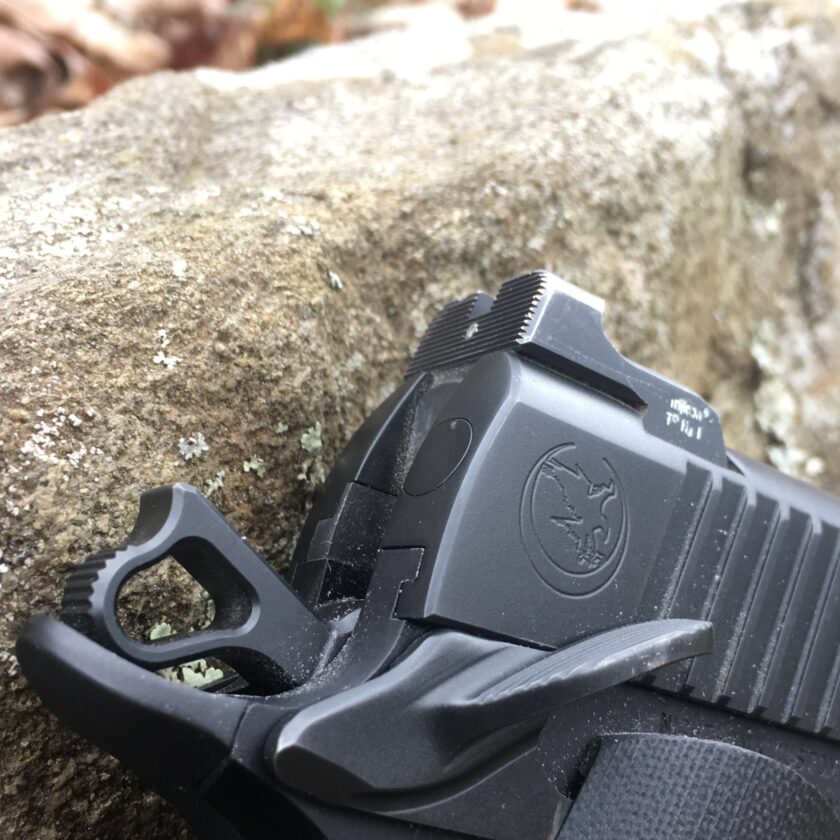
This is why I went with a high-end 1911 from Nighthawk Custom (note: though this has been a phenomenal gun, I am not specifically endorsing Nighthawk, a topic I may explore in a future article). If any 1911 has a good chance of being reliable, a custom or semi-custom 1911 does. I would trust a lot of less-expensive 1911s chambered in .45, but in 9mm? No, I wanted a hand-built gun. And so far my theory has proven correct. I’m over 3,000 consecutive rounds without a malfunction. That’s pretty good by any gun’s standards. There are a couple of other factors that play into that reliability, though.
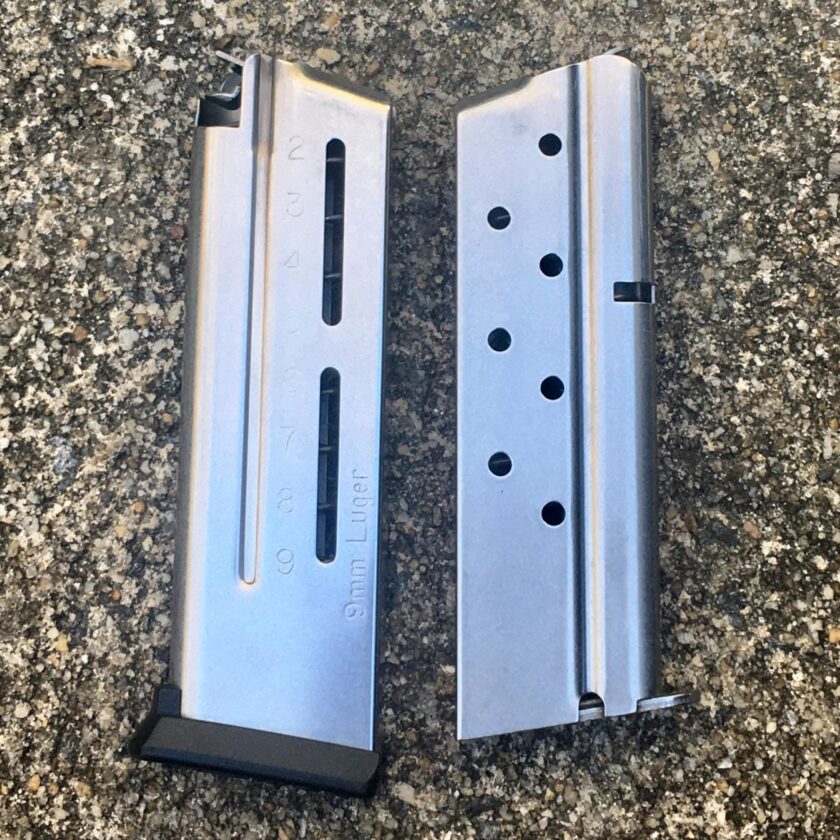
The first is maintenance – I actually maintain my gun and my magazines. If you’re thinking of getting into the 1911 world that’s another thing you should know: you have to actually clean your gun and keep it properly lubricated. And then there’s the issue of magazines. DO NOT go cheap on magazines. The most universally reliable magazines I have ever used are Wilson Combat magazines. I used them in the military, I’ve used them on personal .45s, and I use them now on my 9mm. They aren’t cheap, but if you go cheap you’ll end up buying magazines twice. Trust me on that.
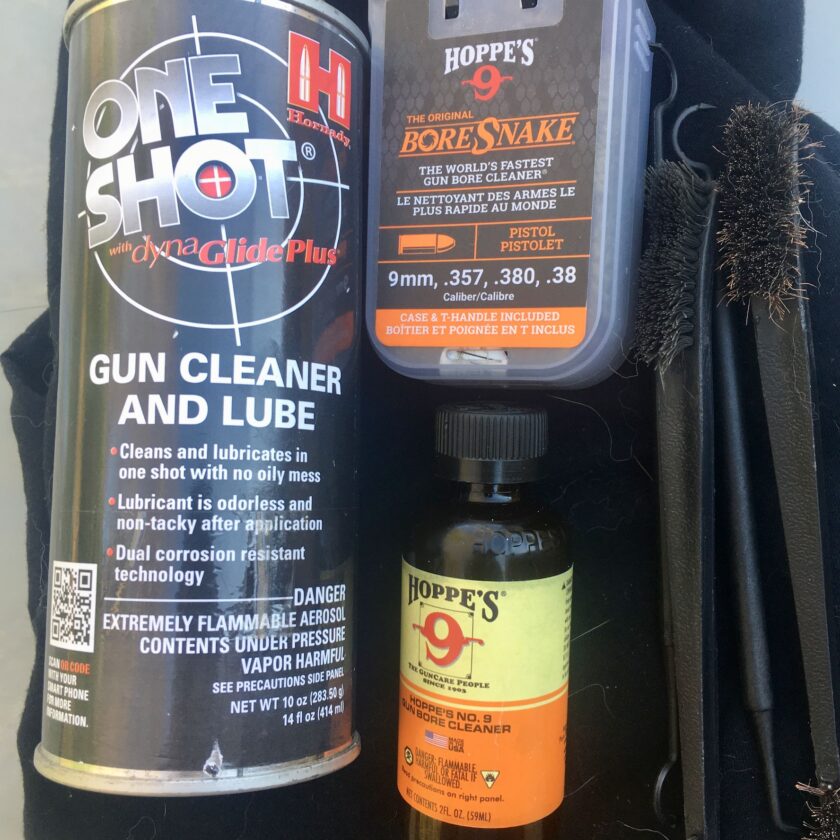
Contraindications to the 9mm 1911
From reading the above it may seem like I have it all figured out. And for concealed carry duty? I’m very, very happy with this gun. I literally carry it from the time I get out of bed until I’m laying back down in bed every day. I can shoot it far better than anything I’ve ever carried. It has proven 100% reliable with the right magazines, and 100% reliable with a variety of defensive ammo. But there are still some contraindications, and some things. . . Well, I’ll put it this way: life would be way, way easier if I could just be happy with a Glock 19. Here are a few reasons.
A second gun: This one probably hits harder than anything – I need have a second gun (and so do you, if you don’t). You need a second gun to replace the one in your holster if you should be involved in a shooting and your gun is taken as evidence. It’s a good idea to have a second gun in case the one in your holster breaks. You need a second gun to beat the crap out of on the range. The cost of building/buying an exact replica of this simply too much for me to afford. I have a couple of guns that I could carry, but not another 9mm 1911 I trust. I am considering the purchase of a Springfield EMP Contour to fill this void, but we’ll see. On the other hand, I could buy two Glock 19s for the cost of a EMP…
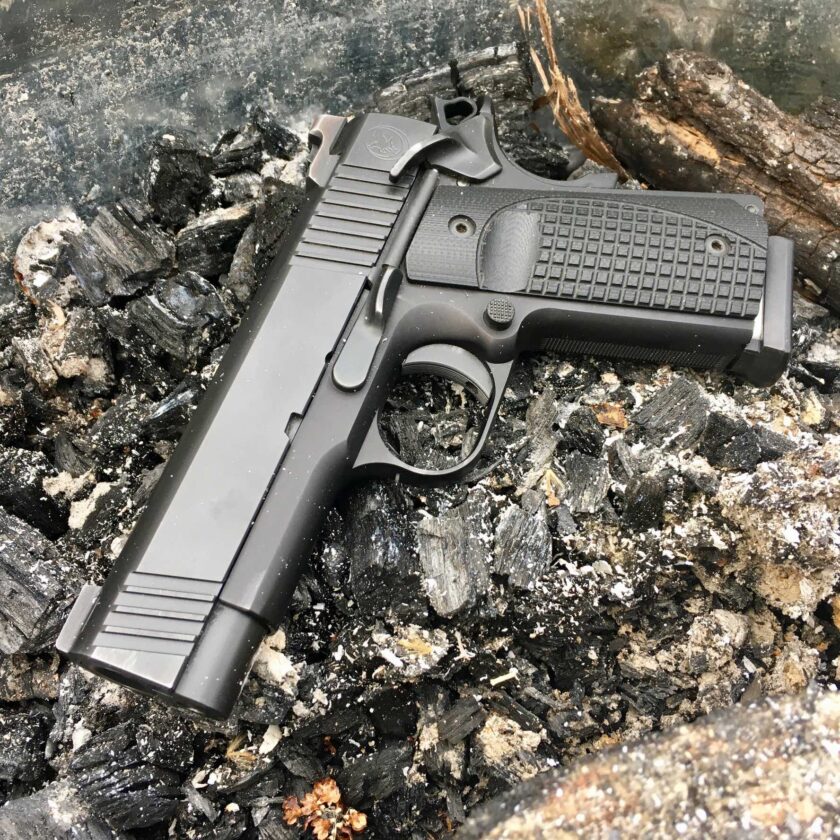
Cost: the cost of a reliable 1911 is high, especially a 9mm 1911. Not only is the gun expensive, you’re going to have to prove that it’s reliable, which is going to take ammo and range time. Granted, you should be proving any gun reliable, but I’ll put it this way: if I had to Commando†-style break into a gun store, grab a pistol and some ammo, and expect it to run, it sure-as-shit would NOT be a 1911. It would be a Glock or a Ruger revolver.
Willingness to invest time in mastery: In the six months or so before I got out of the military, I was a “strap hanger.” I didn’t have a lot going on, but was one of the senior guys hanging around my company office. When the young new guys to the company started showing up, I started working with them just a bit, including beginning their education on the 1911. I stand by what I told those guys then: “the 1911 is an enthusiast’s gun. You don’t just get issued this gun, shoot it, and turn it back in to the armory. You build a relationship with it.” And that’s true. Each operator has to get to know his or her 1911; 1911s are all individuals. Some people find that idea romantic. I don’t find it to be that, exactly, it’s just the way it is.
Parting Shot
So that’s it. That’s why I carry the gun I do. I basically boils down to vast experience and training on the platform, and a desire for a reliable exemplar in 9mm. Do I recommend the 1911 to others? No, for a lot of the reasons I talked about earlier. In fact, if I had not been pushed into the deep end with a 1911, I almost certainly wouldn’t be running one now. Does that mean I think the platform isn’t viable? Absolutely not! Though it doesn’t get a lot of credit, a lot of good work has been done, really recently, with the old single stack 1911 and it shouldn’t be discounted in the hands of someone willing to do the hard work of mastering a reliable one.
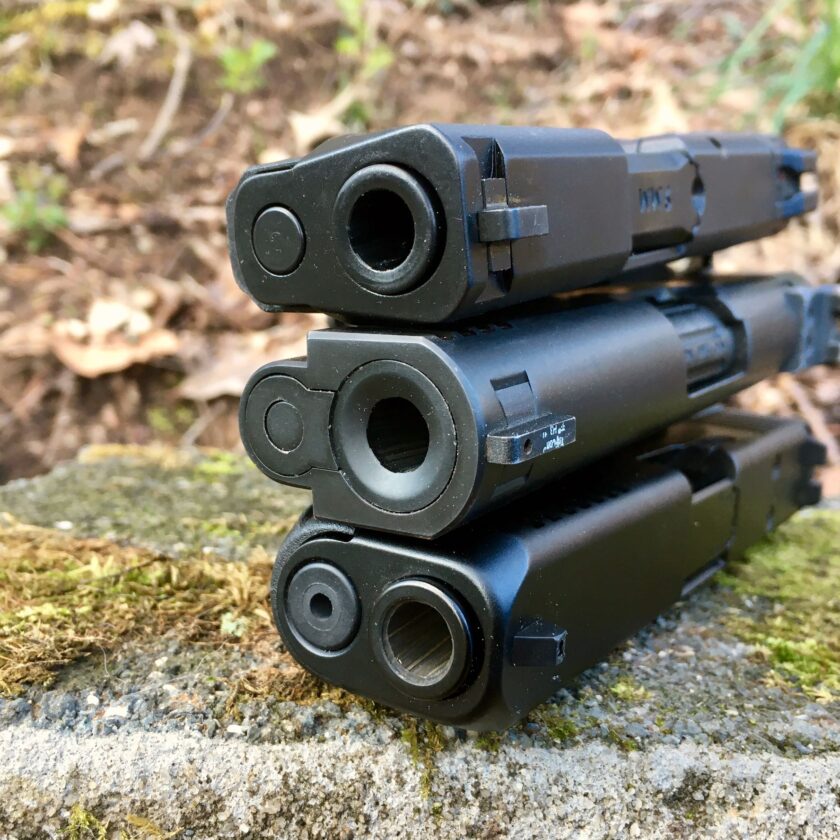
Stay tuned. I may write a review of my pistol if there is specific interest. I definitely have at least one article planned on some lessons learned on the use of a 1911. Again, if there’s anything specific you want to see, let me know.
†If you’re too young to have seen Commando, fix it!




